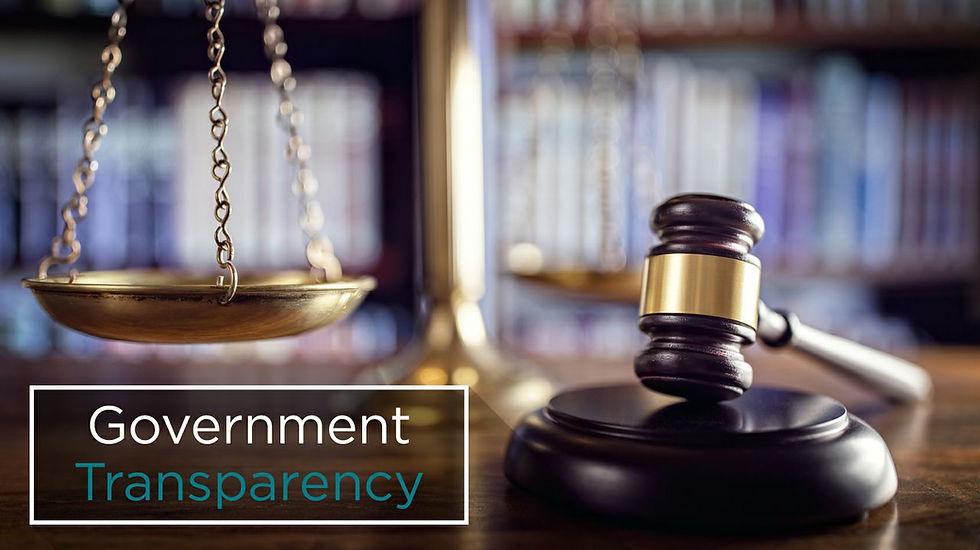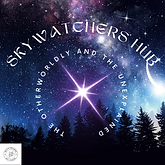Luis Elizondo: A Key Figure in UAP Disclosure
- Skywatcher's Hub

- Feb 13
- 4 min read
Updated: Mar 1

Luis Elizondo, a former U.S. government official, has become one of the most recognizable names in the push for UAP (Unidentified Aerial Phenomena) disclosure. As the head of the Pentagon’s Advanced Aerospace Threat Identification Program (AATIP), Elizondo’s unique position within the U.S. government gave him unparalleled access to classified information about UAPs and military encounters with mysterious aerial objects. His work at the Pentagon, combined with his personal commitment to transparency, played a crucial role in shifting the narrative about UAPs from secrecy and skepticism to one of open investigation and government accountability.
AATIP: Elizondo’s Gateway to UAP Investigation
Elizondo's journey into the world of UAPs began when he became the director of AATIP, a secretive government program tasked with investigating reports of unidentified aerial objects that posed potential threats to national security. AATIP, which ran from 2007 to 2012, was initially under the radar, but its significance grew over time, especially after Elizondo’s involvement. The program’s goal was to gather data on military encounters with UAPs, analyze them, and determine their potential impact on U.S. defense systems.
During his time heading AATIP, Elizondo was exposed to numerous encounters involving U.S. military personnel and mysterious flying objects exhibiting capabilities far beyond what current technology was thought to achieve. These experiences left Elizondo with a sense of urgency: the public needed to know about these phenomena, and the U.S. government needed to be more transparent about what it was learning.

The Pentagon and the Push for Disclosure
Elizondo’s frustration with the lack of public acknowledgment of UAPs was a driving force behind his eventual decision to leave AATIP in 2017. His departure wasn’t due to a loss of interest in the subject; in fact, it was the opposite. He resigned from the Pentagon, fearing that his work was being hindered by bureaucratic red tape and the classified nature of the program. Elizondo realized that to truly move the issue forward, the public needed to be made aware of the government's investigations into UAPs, and he believed the only way to do that was to take the matter outside of official channels.
Upon leaving the Pentagon, Elizondo became a vocal advocate for UAP disclosure. He appeared in numerous media interviews, most notably with The New York Times, where he publicly revealed the existence of AATIP and detailed some of the encounters that the program had investigated. His testimony, which included descriptions of U.S. Navy pilots encountering "unexplained" objects, quickly captured the attention of both the media and the public. The release of video footage of these encounters, along with Elizondo’s firsthand account, reignited the conversation about UAPs in a way that had never been done before.
To The Stars Academy: Furthering the UAP Conversation
In 2017, Elizondo joined To The Stars Academy of Arts and Science, an organization co-founded by former Blink-182 musician Tom DeLonge. The Academy's mission is to investigate and promote the study of UAPs and other phenomena related to aerospace. Elizondo’s involvement with To The Stars Academy allowed him to continue pushing for UAP disclosure while collaborating with other high-profile figures, including scientists and former government officials, to encourage a more open, scientific approach to the investigation of UAPs.
Through his work with the Academy, Elizondo helped facilitate the release of more classified U.S. Navy footage and documents, further building the case for UAPs as a legitimate area of study. His public stance on the issue, along with his expertise and personal credibility, made him a key figure in advocating for government transparency. As a result, UAPs shifted from being fringe topics to subjects of mainstream interest and government hearings.

The Shift in Government Attitudes Toward UAPs
Elizondo’s work has been instrumental in altering how both the public and government view UAPs. Before his advocacy, UAPs were often dismissed as either misidentified phenomena or the stuff of conspiracy theories. But Elizondo’s approach, which emphasized national security concerns and the need for scientific investigation, has made it harder for the government to ignore the issue.
His testimony and the evidence he helped bring to light contributed to the creation of the U.S. government’s UAP Task Force (UAPTF), which was later expanded into the All-Domain Anomaly Resolution Office (AARO) under the Department of Defense. These efforts signaled a significant shift in how the U.S. military and intelligence agencies handle UAP-related information.

Elizondo’s Legacy: Advocacy and Transparency
Today, Luis Elizondo continues to work towards greater transparency regarding UAPs. His commitment to uncovering the truth has inspired a broader conversation about the need for governments around the world to take UAPs seriously, both as a potential national security threat and as a fascinating scientific mystery. Elizondo's efforts have led to increased media coverage, congressional hearings, and a growing public interest in what the government knows about UAPs and when they plan to share it.
His influence has helped usher in a new era of UAP disclosure, one that recognizes the need for openness and a scientific approach to phenomena that were once considered taboo. Whether or not the government is ready to fully reveal the truth about UAPs, Luis Elizondo has undoubtedly been at the forefront of pushing for that disclosure, forever changing the way we think about the skies above us.
In conclusion, Luis Elizondo’s unique position within the U.S. government and his subsequent efforts in advocating for UAP disclosure have played a significant role in changing how both the government and the public view these unexplained phenomena. His legacy will likely be remembered as a catalyst in the ongoing movement toward greater transparency and scientific inquiry into UAPs, ensuring that future generations will approach these phenomena with an open mind and a commitment to understanding.

.png)









Comments